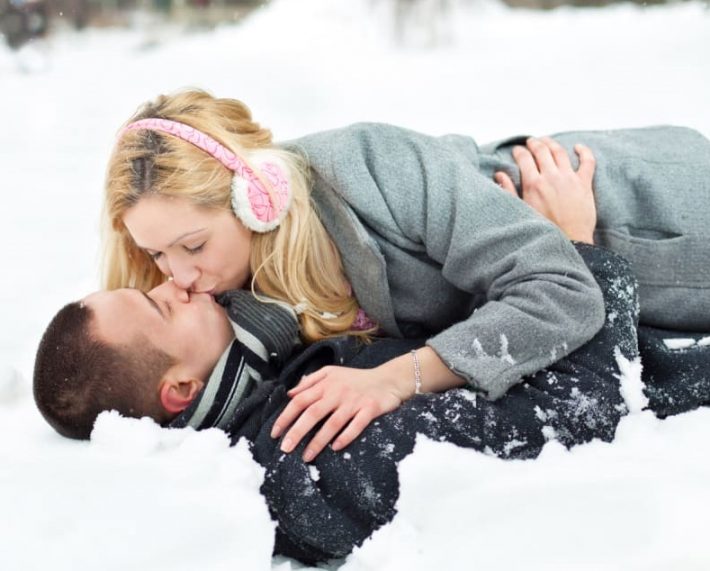Do you see the summer – glorious sunlight, tanned and toned skin and wearing skimpy clothing – as being the sexiest months? Or do you see you and your partner wrapped up together under a cozy blanket, in front of a roaring fire and snuggling up in the winter months as the likeliest time to be having more sex?
It turns out that winter has quite a complex effect on our sex life – in some ways raising our libido and in others lowering it. A test of men’s testosterone levels – the hormone that is most closely related to sex drive – shows that they are at their lowest when temperatures are at their highest and sunlight is most abundant (so much for those sexy, swarthy males on the beaches of Greece and Italy). Whereas more free testosterone is buzzing around men’s bodies in the winter – as much as 31% more – making them more driven to want sex.
The winter months and your sex-drive
And, counter intuitively, a study in 2008 in the journal Perception found that the majority of the males surveyed found women’s bodies more attractive in the winter months than in the summer. The researchers’ view of what could cause this was the ‘contract effect’ – or not seeing too much exposed skin increases the desire for them.
Not only are men fired up by testosterone, and more desirous of female bodies, they actually produce more sperm – and more viable sperm – in the cold months than in the warmer ones. Remember that sperm is produced in the testes which lie in the scrotum, outside the body, in order to keep them several degrees cooler than the rest of the body.
Hormonal effects on your sex-drive
While we’re talking the effects of hormones, there’s serotonin. It affects our emotions, energy levels, sleep and sexual desire. On the latter, it appears to lower your libido, as anyone who has taken it in an anti-depressant drug will attest. It was a study in The Lancet that serotonin was at its lowest level in the winter months – and so, the argument goes, that would conversely make you more desirous of having sex.
If more evidence were needed, you only have to look at when the most births happen – and that is mid-September. It doesn’t take a math master to count back nine months to when conception occurred – and that would be mid-December.
The time leading up to the Festive holidays is even known as the ‘cuffing season’ – that time when people feel the need to find a partner. We get anxious to be coupled up in the cooler months. Though these stretch from October to March, it is thought to be prompted significantly by anxiety not to turn up alone to holiday parties and family get-togethers.
Are there libido-reducing aspects to the winter season? Well, yes, a few. First off, less sunlight means lower levels of vitamin D. This can cause erectile dysfunction; indeed an article in The International Journal Of Impotence Research reported that the degree to which men were lacking in the vitamin correlated closely to the severity of their sexual dysfunction.
Then there’s the millions of people who suffer from SAD – or seasonal affective disorder – which damages their mental health through the winter months. It ups your depression levels considerably – and depression is well-known to be a passion killer. Even for those who don’t have full on SAD, there’s a depression that comes with the end of summer and some anxiousness about the coming Festive season.
If you have a partner, it helps your relationship deeply if your responses to the different seasons – and corresponding libido levels – are in tune with one another. Overall, though, it would appear that the winter months are the times when libido – and fertility – levels are at their highest. Enjoy allowing the cold to get you hot.

